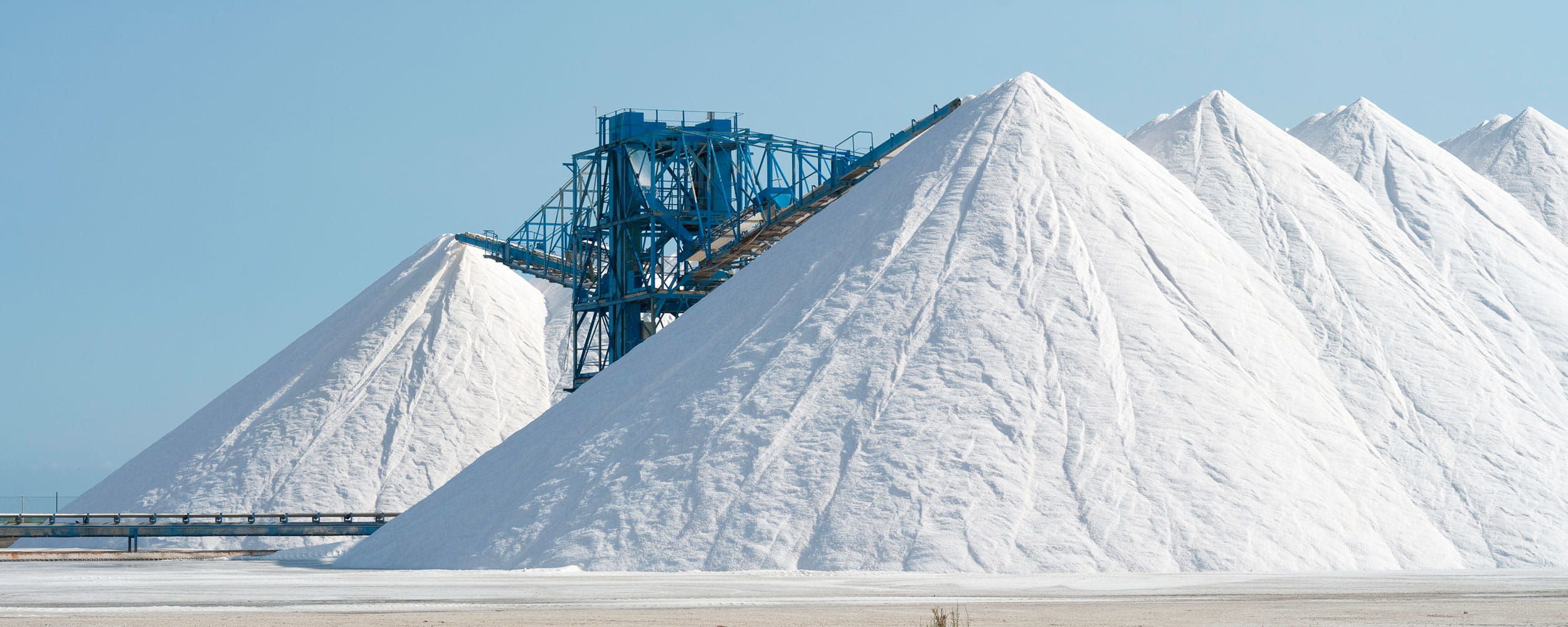When our client experienced cracking in a structure supporting the base of a shaft line, we ran a number of finite element simulations. The conclusion: for halite materials it’s essential to have adequate vertical isolation from the halite strata.
The situation
Potash (KaCl) is a valuable fertiliser that can be commercially extracted from underground deposits embedded in evaporites such as halite or rock salt, formed by the evaporation of ancient seas.
To extract the minerals, vertical shafts are sunk into the ore. Above the evaporite layers, these shafts are designed for typical rock conditions and hydrostatic pressures. In the halite layers, the situation is different; while it has a compressive strength typically in excess of 20MPa, it is subject to significant long-term creep deflections which cause significant closures around the mine shafts and mine underground roadways.
These closures must be fully considered in the design of the mine and its underground structures. One solution often employed for the mine shafts is a concrete liner that goes through the halite material. It is necessary to isolate the liner from the inward and radial movement from the surrounding halite for the life of the mine. Adequate vertical support and lateral restraint for the liner is also required.
At one salt mine, the concrete structures supporting the base of the shaft liners experienced significant cracking. The damage occurred progressively over a short period of time, with a significant amount of the visible cracking occurring in a single event.
Our approach
Advisian’s Advanced Analysis team assisted in an investigation of the possible causes of the cracking of the concrete support structure. A 3D finite element (FE) model was used to simulate the non-linear load-displacement behaviour of the isolation system and the transfer of halite radial and vertical movements to the concrete liners and support structures.
The investigation also included a site visit to inspect the scale and extent of the damage. A review of the remedial works was undertaken, and site information on the mine operation and mine geology that could potentially affect the shaft performance was also examined.
Results
The FE analysis showed that excessive vertical load from the shaft liner was the underlying cause of the concrete cracking and the source of this load is the deformation of the halite rock layer surrounding the lower shaft.
The original design was to isolate the shaft liner from the halite with an effective void filled with an isolation material. At some point in the design process, this material was specified in a way that was not effective for vertical load transmission and as a consequence, the liner support structure was effectively supporting the weight of the deforming strata above. The FE analysis also showed a significant release of strain energy when the main cracking took place.
The model identified the load mechanisms, tested mitigation options and assisted in developing an ongoing movement monitoring program to allow future operation of the shafts.
Conclusions
For these types of deep mine shafts the main conclusion we came to is that for halite materials it is essential to ensure adequate vertical isolation from the halite strata.
From a more general perspective, this analysis highlights the same themes that can be observed in many other mine subsidence problems. That is, the need to:
-
Correctly identify the expected ground movements during the design process
-
Design facilities so they either transmit the design movements or be isolated from them in an effective way
-
Establish the allowable operating limits for the movements
-
Establish appropriate monitoring of the ground movements
-
Develop a management plan to activate the appropriate mitigation actions should the ground movements exceed the trigger limits
CLICK HERE TO DOWNLOAD THE FULL PAPER
This paper discusses in detail the above case study, demonstrating how a concrete shaft structure performs when the isolation system between the halite and shaft liner fails.
For more information contact:

